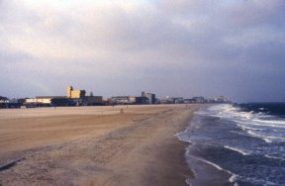An ocean view’s downside
Population growth in coastal areas could threaten shoreline ecosystems.
By Emily Sohn
Going to the beach, swimming in the ocean, and surfing or just watching the waves are part of many vacations. For the increasing number of people who move to coastal areas, such activities become part of everyday life.
However, this population trend—if it continues—could spell trouble for plants and animals living in these areas.
 |
|
As more people move to the shores, ecosystems are likely to suffer.
|
| I. Peterson |
The population of the United States jumped from 249 million in 1990 to 288 million in 2002. Analyses by the National Oceanic and Atmospheric Administration and the U.S. Census Bureau show that the greatest population growth occurred in counties that border the Atlantic Ocean, the Pacific Ocean, the Gulf of Mexico, and the Great Lakes.
The population of these coastal counties shot up more than 13 percent between 1990 and 2002. On average, coastal counties are three times more crowded than counties that are inland.
By the year 2008, researchers predict, another 11 million people will move to the shore, especially the Pacific coast.
This is bad news for coastal ecosystems. More people means more waste and more fertilizer seeping into groundwater. Development could push hundreds of species of plants and animals out of their habitat.
Researchers say that all this development and its ecological impact will pose immense challenges for coastal communities. As more people flock to the coasts, the dream of living on the beach will demand more building, more energy, and more fresh water.







